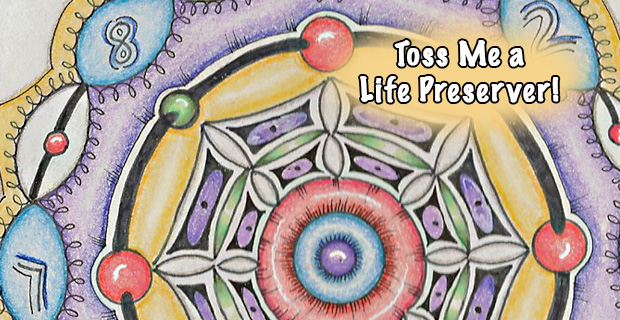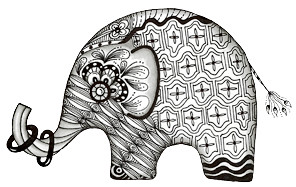
So here I am playing catch up on my blog and elsewhere in my life. What else is new? My sense of creativity and my abilities to maintain regular activities are improving from last months total melt down, but as you can see I’m still not back to “my norm” yet. Still a bit squelched. However I can say that I’m feeling much better since getting my quarterly shots again and I’m seeing a light at the end of this most recent tunnel.
I’m a bit behind on my blog postings for the awareness challenge. I’m still determined to address every single one of the blog prompts for the Migraine and Chronic Headache Awareness campaign. Even if it means I’m behind the pack. So here’s my thoughts on a few of the prompts I’ve missed.
Daily Prompts Missed:
Migraine Awareness Month #3: The Hunger Games: “Happy Hunger Games, and may the odds be ever in your favor”: What healthy habits have you adopted to put the odds of better Migraine & Headache Disorders management in your favor? For me, the habits/rituals/routines needed in order to keep a decent handle on this disease revolve around trigger avoidance. Triggers, for those who may not know, are things that cause our migraine-y nervous systems to go crazy with symptoms and body pain. It’s the same way an Asthma patient or someone with allergies, have to learn what causes their systems to flair up – and then stay away from those things. The tricky part for Migraineurs, is that our triggers come in a wide variety of types and no two migraineurs are exactly the same. Plus as our bodies change over the years, so do our triggers. So trigger identification is a chore that doesn’t ever really go away.
I have a few food triggers that I have to avoid and honestly that’s the easiest healthy habit for me to stick to, because they aren’t things that I crave. Which is good, because I’m not the best at saying no to things I want or like. As my husband can attest to should he find himself in the crafting isle with me at the store!
Most of my triggers are environmental. For example high pitch or clattery noises are migraine inducers. Low-tone noises don’t disturb my nerves though. So strange. Right?! Hard florescent lights are real buggers for me. No hard fluorescents in my home or in my office. And when I’m in other places with fluorescents I wear my dark glasses and limit my time in the area. Here again this can actually be helpful to husband when he finds himself in that crafty store with me where invariably they have tons of migraine inducing fluorescents. He’s thankful that the sooner I get out of the store – the easier it is on my eyes AND on our checkbook! Bright reflections from snow, water glare, and flashing tree-lines are also bothersome. So here again I protect myself similarly.
I can’t always avoid weather patterns, altitude changes, heat/cold extremes, high pitched screams by unhappy wee ones, or high pitched dog barks. But I do try to avoid these as often as possible. Having an overly sensitive nervous system is inconvenient in so many ways!
The three most difficult habits for me to remain on the healthy side of are: Staying hydrated, eating regularly, and sticking to a healthy sleep schedule. If I’m not thirsty or hungry I forget to drink and eat. If I’m not tired enough, my body doesn’t want to sleep. My dear Greg calls or texts me every day to verify I’ve stopped to eat my lunch. I’ve also recently set a series of alarms on my phone that throughout the day reminds me to drink water and eat. I just love these new fangled phone gizmos! I use my iphone for so much more than just making calls. LOL Usually I stop what I’m doing to follow through with the required intake. But I’m a snacker more than a meal maker. So many times I’m pulling out one of the “on reserve” food items from my purse or my desk drawer rather than stopping to make a meal. My fave is a handful of grapes. Love, love, love those green grapes when they are in season! 😀
The sleep thing challenges me much more often than any other migraine trigger. I find it extremely difficult to develop and hold myself honest to a healthy sleep routine! Most especially when creative ideas keep popping into my head as I lay my head on the pillow and wish for sleep to come soon. 🙁 I’ve tried various therapies to help with the sleeping issues. I do okay at best. It’s one of the required healthy habits that I have yet to get a good handle on. I’m trying though. I’m trying.
And here’s the take home message for non-migrainers that I’d like to bring to the table for this prompt: Please be aware that chronic migraineurs are typically aware of their triggers and don’t need to be reminded of them with statements such as, “You should drink more water”. And sometimes we also get frustrated when folks think they know what triggers our migraines and they proceed to tell us this, “If you’d think happy thoughts you wouldn’t have migraines”. And we also want you to know that just because your other friend stopped having migraines when they avoided a particular trigger – that may not (and most probably) won’t be the one thing that works for us too, “My friend said when she cut her hair short her migraines went away. Maybe you should cut your hair”.
Please don’t take offense if we choose not to take your wise advice about what causes our migraines. Please be aware that migraine is a neurological disorder that simple trigger avoidance will not cure! Our neuro systems are overly sensitive to a wide, wide range of triggers. The list of triggers is exhaustively long and continues to grow everyday. Please know that no two migraineurs have the exact same set of triggers nor find relief using the same type of therapies. This is not a disease we bring onto ourselves. It is not an imagined illness. If there was a magic pill, or a perfect solution to identifying and avoiding our triggers – we’d be all over that like bees to honey!!!!!
Do you have a migraineur in your life? Click here to read about the “Dirty Dozen.” A few more things you might want to learn about to help you communicate with them.
Migraine Awareness Month #4: Finding Nemo: “Just keep swimming”: How do you keep going in life when Migraine or another Headache Disorder deals you a difficult set back? and Migraine Awareness Month #5: Carousel: You’ll Never Walk Alone. These two prompts combined hit me very hard this last week and I’d say they did the same for most of the migraine community. That’s because one of “our own” – Melissa Dwyer, who has been a source of strength and a truly supportive friend to so many fellow migraineurs – took her life last week. In her own words it was because, “I can’t take the pain anymore.”
I’ve struggled with trying to decide how to address the subject matter of mental health and perseverance when talking with friends, family, and with myself as well. For nearly everyone dealing with a long-term, incurable health condition – depression rides right along side of us as we travel the road. Sometimes this depression is a comorbidity diagnosis. Sometimes it rears it’s ugly head (in a somewhat episodic way) by the frequency and severity of the physical pain. And sometimes it presents itself through anger or sadness after unwanted news from doctors or unintended hurtful comments from others.
I recognize depression in myself early enough in the cycle (when I’m not too far inside the migraine mushy brain phase) that I will reach out and tell someone I could use their help. Admittedly though, I don’t usually verbalize my request quite that clearly. Those who are closest to me seem to pick up on my request for sanity- checks and provide the talk therapy or gentle touch that I’m needing to get me through the immediate struggle.
I’ve had tons of training on suicide prevention – partly because of family needs and partly because it’s required in my job. So I may be more keen on seeing the symptoms in myself and others than folks who haven’t received special training or haven’t faced this reality in their own lives. I’m not going to go into this in great detail. And I’ve also decided not to quote for you the stats on suicides associated with managing migraine disease. Suffice it to say the numbers are far too high!
However as a part of this month-long awareness campaign I will take this opportunity to encourage you to learn what you can about the signs of severe depression, and suicide. And if/when you see even the slightest glimpse of such indicators in anyone you know (whether they are dealing with chronic illness or not) – reach out to them and provide the help or assist with getting them the help they need. Be especially mindful of such signs within yourself too, and reach out to others best you can and as early as you can when you start having those feelings of depression. For so many people – the longer you are depressed, the stronger the pull to continue toward that depression spiral. It’s more difficult to reach out and it’s harder to heal – the longer you let it go. For me – as my depressive thoughts/emotions get stronger the mushier or weaker I am at making rational decisions. I would venture to say that at times depression hinders decision making skills as much as or maybe even more than some alcohol/drug use situations do.
And on that same note let me just add another thought of warning. Pay attention to the possibility of your prescription medication causing depression. It is a side affect of many drugs and one that is rarely taken seriously by patients and/or their doctors. Topamax (a common migraine preventative med) almost killed me. Literally! I had many negative side affects from that drug. All were dismissed as “usual” and non-worriesome, or “at acceptable levels” for me to continue the regiment. That is to say, that’s how my doctor saw it. Until the day I said, “NO MORE!” I knew in my heart that my depression was at a very serious level and it was the Topamax that was causing it. After weaning from that drug (it’s one you cannot safely go cold-turkey off of) – the severe depression I was experiencing finally went away. The other horrible side affects also went with it. Unfortunately throughout the full 9-month trial with that particular drug option, my migraines never let up. They did however increase in severity. Bummer! I had high hopes for that one as I know many people have success with Topamax.
Melissa’s death has caused a great deal of open discussions in several of the online groups that I participate in. These discussions have revealed three very, VERY important things about our disease and the treatments of it. Things that patients and caregivers need to be aware of:
1. Suicidal thoughts have crossed the mind of the majority of migraineurs (multiple times) and it is more often than not while in the midst of migraine attacks with high-level pain that have continued for several days/weeks, etc. Without any pain relief, during the prolonged times of level 10+ pain, our brains become too “mushy” to make rational decisions. And when the decision we are considering is how to relieve the pain, death seems more viable because we aren’t thinking as clearly as we would be at a lower-level of pain. In just one Facebook discussion thread in a group of chronic migraineurs over 60% of the membership has admitted to facing this decision when they felt they were not in their “right mind” because of extreme pain. I truly wish the healthcare profession would become more aware of this and consider a patient presenting themselves with high-levels of pain SHOULD NEVER be dismissed without some assistance for relieving the pain immediately. If pain relief is not an option, then they should be under very close observation until they can make rational decisions on their own again. Once the pain comes down to a more acceptable level, the patient is more apt to make “cleaner” decisions about their healthcare.
2. People are out there who want to help. In one of the online groups I participate in, folks have started to build lists and set up small support groups based on locality. So that when a migraineur is at their wits end – they can reach out to someone else who can relate. So their fellow migraineurs can assist with getting them assistance when others don’t seem to understand the severity of where they are in their migraine attack cycle. These groups can of course relate on a very personal level as we can all say, “I’ve been there and survived.” We are also educated as to how non-migraineurs react or sometimes don’t react to our pleas for assistance. I do believe the online migraine family is close knit and very supportive of one another. However we really do need more support for APPROPRIATE mental health services and peer support in our off-line communities as well. (Yes that bold face “appropriate” means more than just the prescribed meds or flipped remarks meant to subdue a depressed person.) Quality/understanding talk therapy and “buddy” support systems are many, many times the most powerful and beneficial form of assistance a person with a chronic illness needs to manage their mental health along side their physical health. I’d say this is especially true for those of us with an invisible illness! Here again it’s important for the healthcare providers and the patients to be aware of the need for proper support services in our communities that go beyond headache specialty offices and pharmacy availability.
3. An ongoing theme in the online communities is that we have to take our health matters into our own hands. Educate ourselves, the people around us, and yes – many times we need to educate our healthcare professionals too. So I want to just reiterate it here: Migraineurs, and others with invisible illnesses and chronic pain sufferers – get informed. Stay informed. Inform others who need to be informed. Awareness is not a one-time good deal. It’s not JUST a month long event. It’s an ongoing journey.
While On the Journey…..
As you wade through the mess of information; as you struggle through the painful moments; as you fight through the healthcare and insurance challenges; as you hold the reins and man-handle your personal beast remember this: Keep Swimming! Shout out for a life preserver when you tire! You ARE NOT on this journey alone. If you do not have a support system that’s adequate for your situation, keep looking. If you need a friend….. please consider me as one and reach out and share your thoughts with me. I will do what I can to listen, to talk, to find you assistance in your area. http://suicidehotlines.com/national.html
Creatively Speaking
Art is therapy for me. You’re probably thinking, “Duh! We knew that!” Today I really wanted to share some specifics with you about how to use art as therapy for you too. However, my blog posting has already run on far too long. So let me just say a few words about how I recently used art to help settle me. And maybe it will lead you to use art to comfort your soul sometime as well.
Rarely can I use art as therapy when I’m in the headache part of a migraine attack. However artful sessions are both a physical and mind therapy that I use often during the prodrome and the postdrome phases. Sometimes during my art-therapy sessions I deploy a specific process or method that is designed to assist with pain management, self exploration, or healing. At other times I simply create without much thought about such things, rather I create just to keep myself moving or to help me avoid one of those nasty triggers. Then there are times when I focus my thoughts on the project at hand merely to keep my mind from wondering to other, less comfortable places. It’s used for a few moments of stress relief. Such was the case one night this week.
Monday evening I couldn’t sleep (again). I was wrapped up in my thoughts about Melissa’s life and her death. I kept revisiting in my mind all the forum discussions about supporting her family and our need to make people aware of how migraine disease is not only REAL, but also one that should have more research funding available to help find a cure. My emotions kept vacillating between sadness, anger, and thankfulness. I wasn’t successful with turning off my mind chatter while laying in bed. So I went to my studio and picked up my sketchpad. Working under a low/soft light and in a somewhat numbed phase of creativity I drew a picture of one of the photos I’ve seen passed around the web of Melissa and her infection smile.

Melissa Dwyer
I’m not sure why it is that while I wanted desperately to STOP thinking about the impact of her suicide and the last words she shared with us online – the thing that comes out on my page is a picture of her. But I do know that as I crafted the page I did find some level of comfort. Towards the end of this therapy session I was thinking about the good things Melissa did for our community while she was alive as well as since then.
I’m very well versed in looking at such artful sessions as therapeutic because of the creative process, not the end product. As I put away my tablet and pencil, I reminded myself that though my drawing skills are no where near “spot on” I still found myself smiling when looking at her face. I had peace in my heart. My mind relaxed. And finally sleep found me. 😀
I know this was a very long posting today. Thank you for hanging in there with me as I rattled on about migraine madness. Thank you for your understanding. I guess I needed to get this out of my wee brain and onto the page more than I realized. I’ll try to make my next posting less lengthy! LOL 🙂
Hugs and Happy Thoughts to all my Doodly Friends!
~Cindy
In my next posting I’ll include a purple ribbon giveaway!
June, Migraine and Headache Awareness Month, is dedicated to Unmasking the Mystery of Chronic Headache Disorders. The Migraine and Headache Awareness Month Blog Challenge is issued by FightingHeadacheDisorders.com.







Trackbacks/Pingbacks